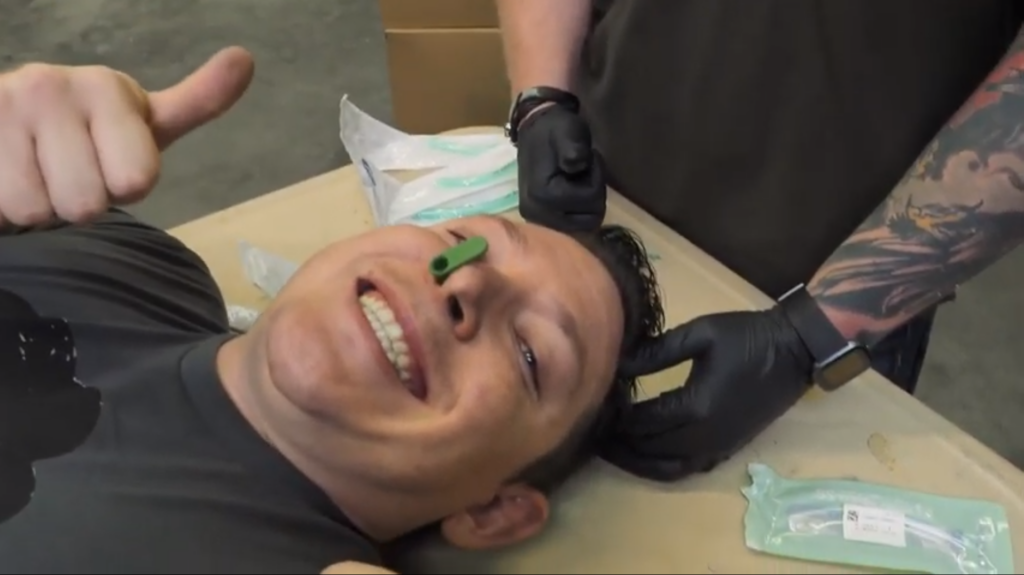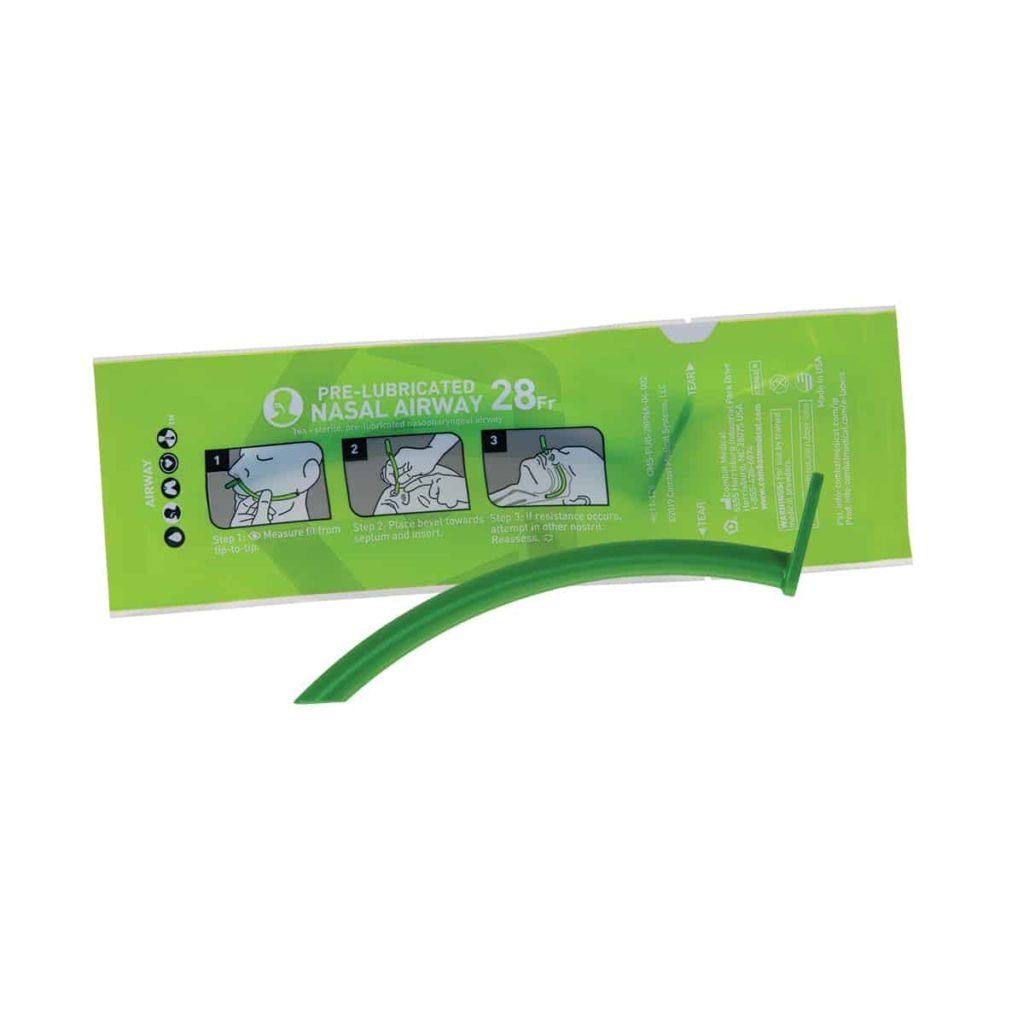What is a Nasal Pharyngeal Airway?

Taking care of someone who is unconscious can be daunting, especially if you don’t know what you are doing. Trauma to the head, or even a massive loss of blood can cause your casualty to lose consciousness.
When unconscious, the casualty loses their ability to protect their airway and their tongue may fall to the back of their throat and close (occlude) the airway.
If not managed properly, this can cause your casualty to expire, or at the very least, cause complications. Since this isn’t our goal, we need to have a plan for helping the casualty keep their airway clear.
A Nasal Pharyngeal Airway (NPA) is a soft rubber tube that is inserted into the nostril of the casualty to keep the tongue out of the way and allow a clear path of oxygen to enter the lungs.
Most NPAs are packaged dry and might, (or might not) include a small packet of lubricant to aid in the insertion. As a new Corpsman attached to Marine Corps combat units, I was told that saliva, blood, or anything else available can be used as a lubricant in the event you don’t have any.
Times, and gear change, thankfully…
The Mountain Man Medical NPAs are sourced from Combat Medical and come pre-lubricated so you don’t have to worry about carrying extra packets or taking the time to apply it to the NPA before insertion.
Our NPAs come in the standard size of 28 French, the most common size for application on the average American warrior, and might not work well on very small adults, or children.
How to Insert
- Position yourself at the head of the casualty lying on their back.
- Open the NPA package and remove the tube. Be careful not to lose your grip. It’s pre-lubricated and slippery.
- Ensure the bevel of the NPA is facing inward, towards the septum of the nose.
- Insert the NPA straight down with a firm, gentle, slow pressure.
- Do not force it. If you meet resistance, gently twist the NPA, and re-try and it should continue to slide back.
What if:
The casualty gags after you’ve inserted the NPA?
Pull the NPA out slightly about one inch. It may be too deep, and this should help.
- The casualty vomits?
Roll the casualty over onto their side to allow the vomitus to drain and keep the airway clear.
- The casualty wakes up?
If the casualty regains consciousness, they won’t want to leave the NPA in place. They will often pull it out as soon as they wake up. This is ok, since they are now awake, they can protect their own airway and no longer need the NPA in place. If they lose consciousness again, just re-insert the tube.
- The NPA won’t advance?
Sometimes, due to the internal structures of the nostrils, the NPA won’t fit. Deviated septums are the most common cause of problems. If this occurs, try to insert the NPA into the other nostril with the same procedure as above.

